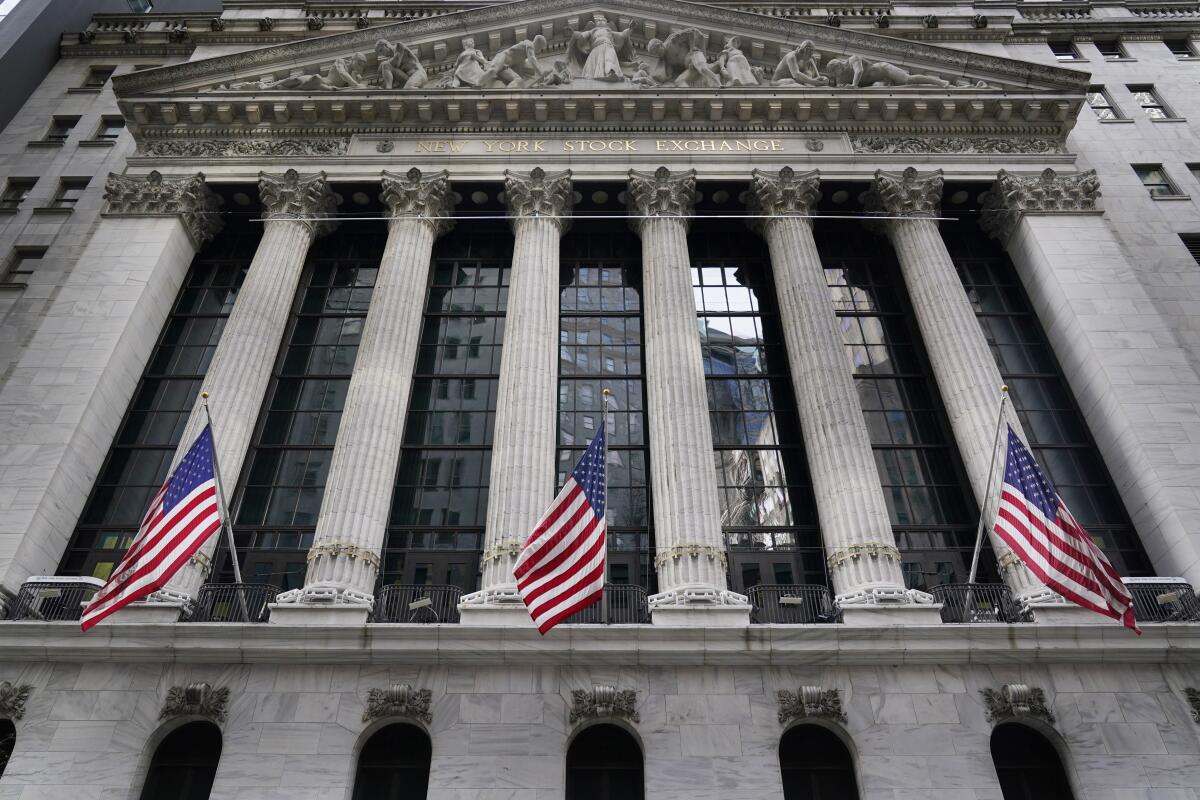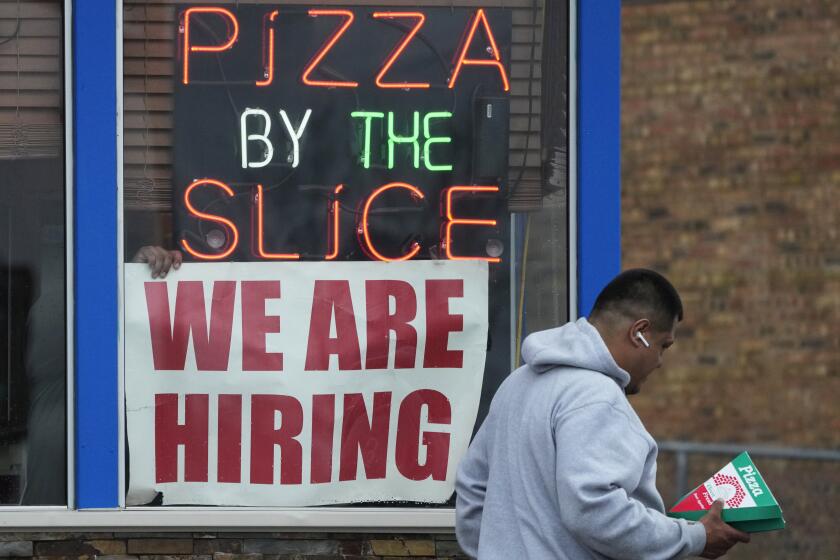Wall Street rallies and tech stocks leap as inflation cools

- Share via
A rally on Wall Street on Thursday lifted stocks to their highest level in almost two months after the latest sign that inflation continues to cool.
The Standard & Poor’s 500 rose 1.3% after a report showed inflation at the wholesale level slowed last month more than expected. The Dow Jones industrial average gained more than 383 points, or 1.1%, while the Nasdaq composite jumped 2%.
Thursday’s report showed that prices paid by producers last month were 2.7% higher than a year earlier, the lowest inflation level for them in more than two years. The hope on Wall Street is that easing inflation at the wholesale level will not only support profits for companies but also flow through to cooler inflation for consumers. A day earlier, a separate report said inflation for consumers slowed to 5%.
High inflation and the interest rate hikes imposed by the Federal Reserve to tame it have been at the center of Wall Street’s struggles for more than a year. The Fed’s rate hikes over the last year have already slowed parts of the economy and exposed strains in the banking system.
A separate report Thursday said slightly more workers than expected applied for unemployment benefits last week, though the job market has remained resilient. A softening job market could take more pressure off inflation. That plus the inflation report underscored traders’ expectations that the end is near for the Fed’s rate hikes.
Traders shaded some bets toward the Fed holding rates steady in May, though the majority still expect one more modest hike.
Less expensive gas and lower food prices provided some relief to households that have struggled under the weight of surging prices for nearly two years.
A less aggressive Fed would help Big Tech stocks in particular because high-growth stocks are seen as some of the most vulnerable to higher rates. Apple climbed 3.4% and Amazon jumped 4.7%. The pair were two of the biggest forces lifting the S&P 500.
The Fed has hiked rates at every one of its meetings since early last year. High rates can smother inflation by slowing the entire economy, but they also raise the risk of a recession and hurt prices for investments.
High interest rates and inflation are restraining corporate profits. Expectations are low as companies this week begin reporting first-quarter results, with forecasts calling for the sharpest drop in earnings since the pandemic was pummeling the economy in 2020.
Delta Air Lines slid 1.1% after flipping between gains and losses through the morning. It reported weaker results than expected for the latest quarter but predicted a bigger-than-expected profit for the second quarter.
Investors are likely to focus more on such forecasts than on the backward-looking results of the last three months. Even though forecasts for 2023 earnings have come down a bit, the “2023 consensus still looks optimistic if we are headed to a recession,” equity strategist Savita Subramanian wrote in a BofA Global Research report.
Several of the biggest banks will report their results Friday, potentially offering more clues. One of the fears on Wall Street is that recent turmoil in the banking system could cause a pullback in lending, which in turn could weaken the economy. The Fed’s staff economists see such weakness potentially causing a mild recession later this year, the central bank said Wednesday.
The bond market has shown much more worry about a possible recession than the stock market, with traders betting heavily on the Fed having to cut interest rates this year to prop up the economy.
U.S. hiring in March reflects a resilient labor market and suggests that the Federal Reserve may see the need to keep raising interest rates this year.
Treasury yields fell immediately after Thursday’s weaker-than-expected reports, before paring their losses and reversing through the morning. The yield on the 10-year Treasury rose to 3.44% from 3.40% late Wednesday. It helps set rates for mortgages and other important loans.
The two-year yield, which moves more on expectations for the Fed, was holding steady at 3.97%.
The S&P 500 gained 54.27 points to close at 4,146.22. The Dow rose 383.19 points to 34,029.69, and the Nasdaq jumped 236.93 points to 12,166.27.
Strategists at Goldman Sachs are more optimistic about the economy’s prospects than many, forecasting only a 35% probability of a recession. But they also say prices in markets now may mean not much upside is left.
The bond market may be looking for rate cuts, but the Fed may have less room to lower rates given how strong the job market is. Profit margins may also have little room to rise further, which would hamper stocks.
That leaves the possibility for further returns from stocks and bonds “not as stellar as one might expect,” Jan Hatzius, Goldman Sachs’ chief economist and head of global investment research, said in a report.
Associated Press writers Joe McDonald and Matt Ott contributed to this report.
More to Read
Inside the business of entertainment
The Wide Shot brings you news, analysis and insights on everything from streaming wars to production — and what it all means for the future.
You may occasionally receive promotional content from the Los Angeles Times.












